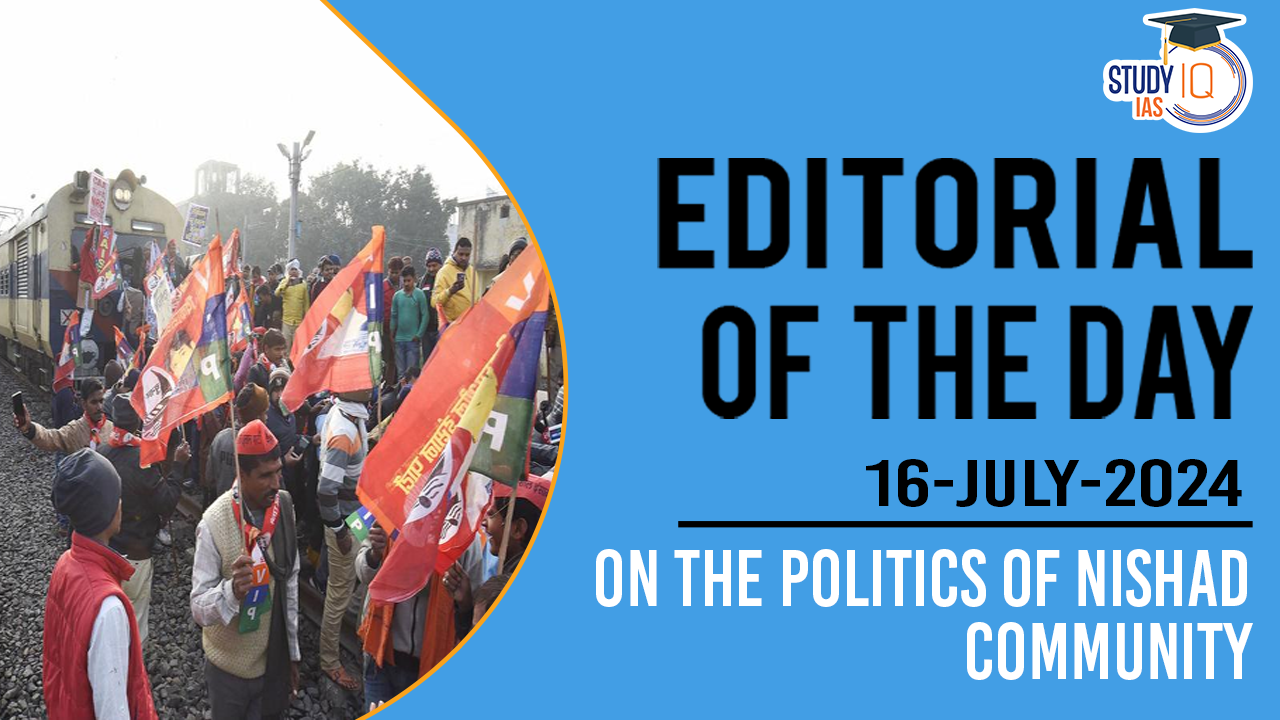Table of Contents
Context: The 2024 Lok Sabha elections highlighted the shifting political allegiances and the growing importance of the Nishad community in U.P and Bihar.
Who are the Nishads Community?
- The term “Nishad” represents a larger political and social identity that encompasses many sub-castes, who have gradually unified under this singular identity after the Mandal Commission report.
- The Nishad community is a collective term used for various riverine and fishing castes across northern India.
- Historically, they have been associated with occupations related to rivers, such as fishing, boating, and sand mining.
- Geographical Spread: They are primarily found in the states of Uttar Pradesh and Bihar, with significant populations in areas adjacent to major rivers.
Core Issues Associated with Nishads
- Socio-Economic Status:
- The Nishads generally belong to the lower strata of the socio-economic hierarchy in India. They have historically faced social and economic marginalisation.
- Many community members still engage in traditional livelihoods, which are increasingly threatened by environmental changes and regulatory policies.
- Rights over Natural Resources:
- Riverine Rights: A fundamental issue for the Nishads is securing rights over river resources. This includes rights to fish, access to riverbanks for docking boats, and sand mining.
- Conflict and Regulation: There have been ongoing conflicts with state authorities, particularly concerning regulations that restrict their traditional rights, such as those regulating sand mining and fishing areas.
- Political Representation and Recognition:
- Demand for Scheduled Caste Status: In Bihar, the Nishads have been advocating for inclusion in the list of Scheduled Castes to gain access to reserved government jobs and educational opportunities, aiming to alleviate their socio-economic backwardness.
- Political Mobilisation: The community has been mobilising to form a more unified political block to assert their rights and influence policies directly affecting them.
- Cultural and Social Identity:
- The Nishads have a rich cultural heritage connected to the rivers of India, often reflected in local folklore and religious practices.
- They seek recognition of this cultural identity and its preservation amidst modernising pressures and environmental degradation.


 5 Years of SVAMITVA Scheme and Its Benef...
5 Years of SVAMITVA Scheme and Its Benef...
 Places in News for UPSC 2025 for Prelims...
Places in News for UPSC 2025 for Prelims...
 Countercyclical Capital Buffer (CCyB): P...
Countercyclical Capital Buffer (CCyB): P...





















